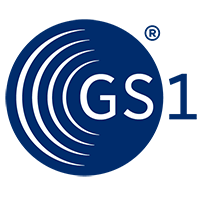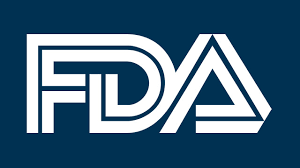The Drug Supply Chain Security Act (DSCSA) requires that starting November 2017 manufacturers mark their products in human- and machine-readable format with a National Drug Code (NDC), serial and lot numbers and an expiration date. Serialization deadlines differ depending on where a company is in the supply chain – November 2017 for manufacturers, November 2018 for repackagers, November 2019 for distributors.
In an effort to help companies prepare for the deadlines, several U.S. trade associations, 11 drug manufacturers and repackagers, 13 solution providers, 4 wholesalers and several individual industry consultants spent two years working on a second edit of the GS1 US guideline, released in early-November this year. Providing a detailed breakdown of the item-level traceability and lot-level management, the implementation suite dwells on the use of the Electronic Product Code Information Services, the EPCIS.
GS1 US is the U.S. part of the global GS1 organization, which pushes forward the use of product identification and tracking throughout the pharma industry worldwide. Its requirements have been accepted by the FDA as a base for the implementation of the DSCSA goals. These procedures are already used in other industries in at least 40 countries. So, the update to the EPCIS standard (EPCIS and Core Business Vocabulary (CBV) released in September 2016) along with the new implementation guideline, mark the next milestone for the pharma and healthcare tracking systems update.
Who Should Read It
Primarily, the solution providers. Any solution provider building platforms to facilitate DSCSA compliance for the companies in the drug supply chain must read the guideline.
Drug manufacturers that need to meet the requirements of the wholesalers to provide serial number information, so the wholesalers can meet their saleable returns verification deadline in 2019, also need to read it to facilitate interoperability.
As for other participants of the drug supply chain, it is best if they have at least a couple of technically-savvy people in the organization who understand the concepts outlined in the guideline.
GS1 US DSCSA Implementation Suite
The 600+ page suite consists of four documents, the main Implementation Guideline, and three addenda, offering information and examples on serialization, pedigree and track-and-trace obligations of the industry as a whole, and also explaining how particular businesses can apply the standards to comply with the DSCSA.
Besides improved readability and document formatting as compared to version 1.1, the version 1.2 brings some important changes. Here are the highlights:
Since EPCIS and CBV have been updated in September to the version 1.2, the guideline accounts for the changes, as the previous edit only used EPCIS 1.1 and CBV 1.1 plus custom extensions. Lot-level management-related EPCIS event specifications have been updated with regard to EPCIS 1.2 and CBV 1.2.
Serialized item traceability-related EPCIS event specifications are updated to cover all DSCSA data requirements, featuring new EPCIS 1.2 and CBV 1.2. The previous 1.1 guideline used EPCIS 1.1, CBV 1.1, custom extensions, and was based on 2015 California drug pedigree law.
Special attention goes to the expiration dates. The guideline recommends manufacturers should always include a day of the month and highlights the importance of synchronization of the expiration dates printed on the label, reported in EPCIS and encoded in the barcode.
“Application of EPCIS for Serialized Item-Level Traceability” (Implementation Guideline, part III) is new, and dwells on using EPCIS serial numbers when implementing item-level traceability. DSCSA deadline for this is 2023, but manufacturers that need to comply with the wholesalers’ requirements will need to implement it sooner, by 2018. The wholesalers’ deadline for the saleable returns verification is in 2019, so manufacturers will need to provide them with serial number information to ensure interoperability. So, even if manufacturers are not rushed by the DSCSA, wholesalers will enforce a faster implementation on the manufacturers anyway.
The version 1.2 gives more EPCIS event times clarification, as well as a guidance on notifying trading partners of an exception condition. In this regard, “Diagrams and XML Examples for Serialized Exceptions Processing” addendum is a must-read. When November 2023 comes, and EPCIS is implemented in compliance with the DSCSA, errors, inevitable in documenting product shipments at the serial number-level in EPCIS events, must be corrected. That’s where the scenarios covered in the addendum provide guidance. Termed as “exception processing,” these scenarios (total of 16) show how to fix possible errors, including the IT-related errors and cases involving damage to the product. These are complex processes, so you want to understand the concepts.
The changes introduced in version 1.2 explain the details in the formatting and recording supply chain events to ensure the item-level data is handled properly. According to Peter Sturtevant, senior director at GS1 US, the exceptions fall into four categories, when:
- a trading partner receives no EPCIS record with the shipment;
- the trading partner receives the EPCIS record, but not the physical shipment;
- the barcode identification must be changed;
- there are errors on both ends, the shipping, and the receiving.
When a problem occurs, a wholesaler must quarantine the product until the issue is resolved, but wholesalers are averse to spending the time on exception management. EPCIS will help automate and speed up the exception management, something that is difficult to perform when using the ASN communications via EDI standards.
More exception scenarios complete with XML examples and flowcharts are added for the lot-level management and serialized item traceability. (Application of EPCIS for Lot-Level Management, part II of the Implementation Guideline).
More EPCIS event specifications are added, covering the exception scenarios for the lot-level management and serialized item traceability.
EPCIS event specification for a Transformation event covers repackaging scenarios under DSCSA lot-level management requirement.
The next guide edition, according to Sturtevant, might come in the foreseeable future. The eyes of the industry are still on the FDA that is behind on its own implementation guidelines for the DSCSA compliance.
On a lighter note, the TrackTraceRx team posted pictures of our event at the ASHP Show in Las vegas. You can see the pictures here!
About TrackTraceRx Suite
Other solutions on the market today are totally fragmented by only providing one piece of the puzzle. Pharmaceutical companies today are stuck subscribing to multiple services, accessing different companies for support and paying thousands of dollars to integrate different systems. The TrackTraceRx Suite is a game changer by combining the TrackTraceRx Traceability Solution, a ERP, and a Commerce Platform completely integrated out of the box. This eliminates having to deal with multiple support, feature services and integration costs.




